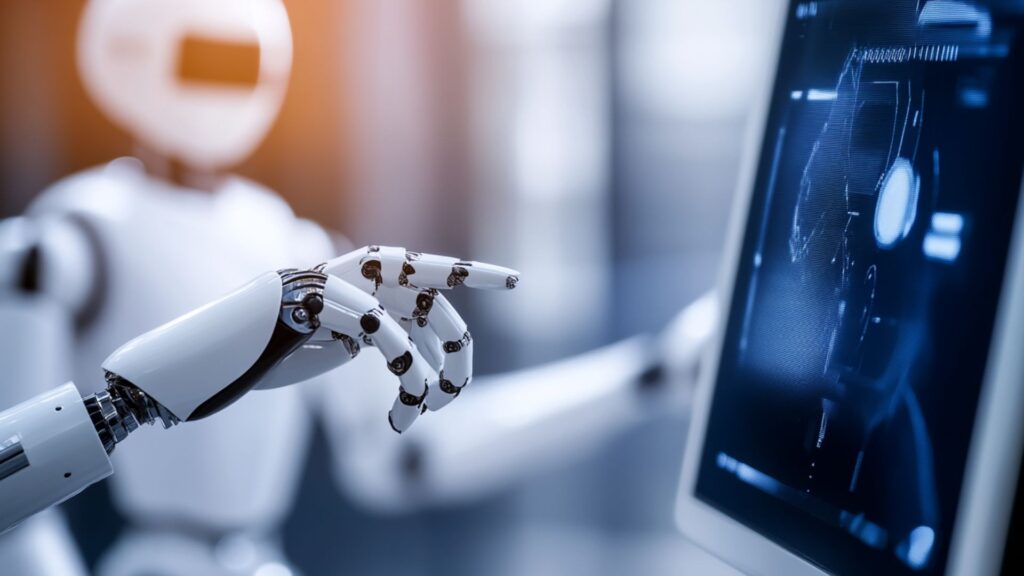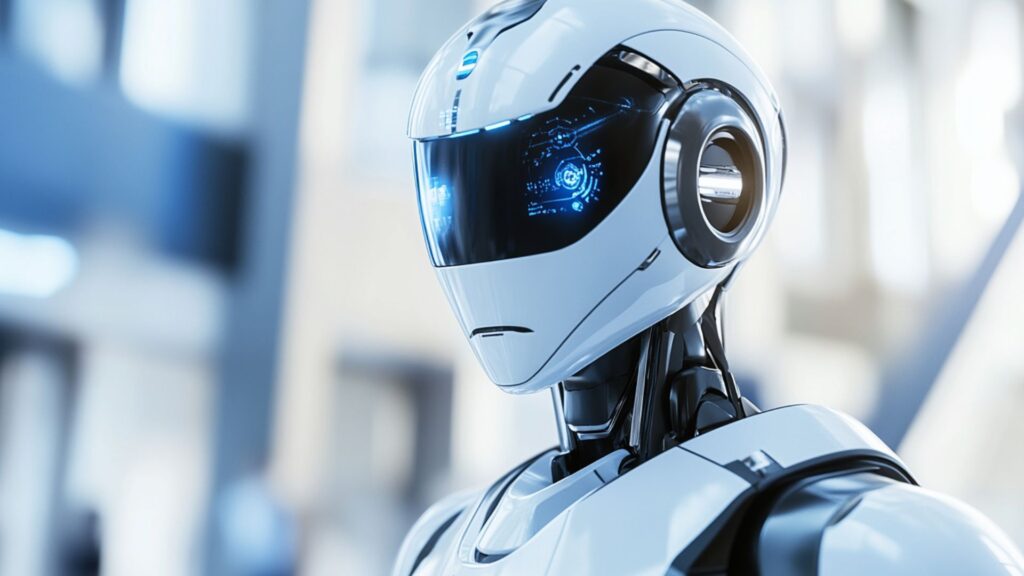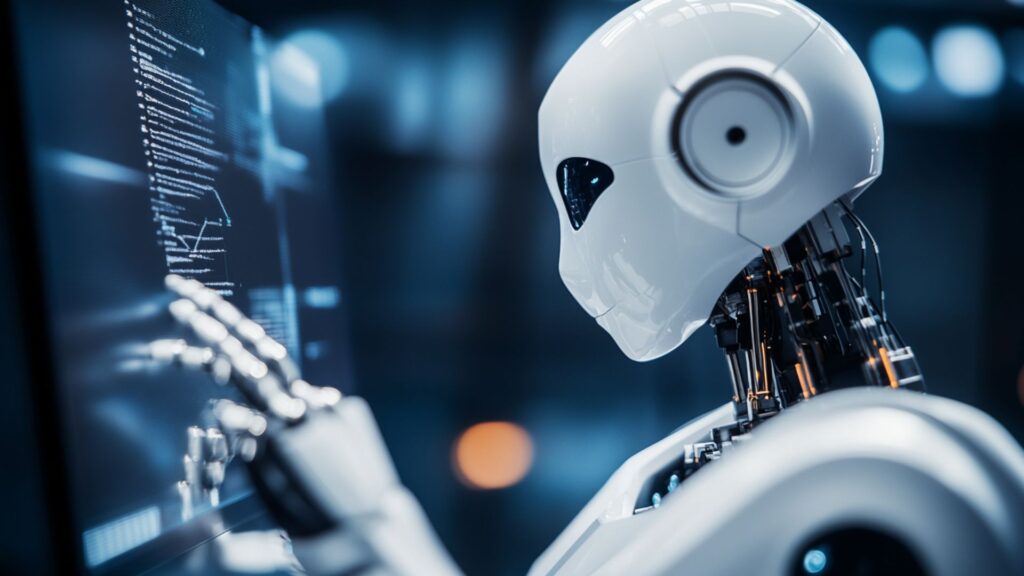Difference Between Automated Digital Worker and Traditional Automated Bot

In today's business world, the conversation around digital workers vs bot automation is everywhere. Companies of all sizes are seeking ways to streamline operations, reduce costs, and free their employees to focus on more strategic tasks.
At the heart of this shift are two key players: the traditional automated bot and the more advanced automated digital worker. These terms are sometimes used interchangeably. However, they represent two very different levels of sophistication and capability.
Understanding the distinction is no longer just a tech curiosity. It's a critical business decision. Our article will serve as your guide. It will help clarify the core differences, explore their respective uses, and look at what the future of work holds. Automated bot software and digital workers are both part of a broader effort to create an efficient, technology-driven workplace. But their roles and capabilities are fundamentally distinct.
Understanding Automation: From Bots to Digital Workers
Automation and digital worker solutions are not a new idea. For decades, companies have used technology to handle repetitive tasks. Think of the early scripts and macros that could automatically format a document or sort a spreadsheet. These were the ancestors of today's automation tools.
The initial wave of automation focused on simple, rule-based tasks. The goal was to remove manual effort from predictable processes. This approach, however, had its limits. It couldn't handle unstructured data or adapt to changing conditions.
As a result, businesses began to realize that simple task automation wasn't enough to achieve true efficiency. They needed something that could not only follow instructions but also think and learn. This need gave rise to the concept of the digital bot. It's a much more intelligent and capable form of automation.
This evolution represents a significant leap from simple task replication to cognitive problem-solving. It mirrors how human job roles have also become more specialized and analytical over time.
Defining Traditional Automated Bots
At its core, a traditional automated bot is a rule-based system. It's designed to perform a specific, repetitive task. It operates within a very structured environment. For the most part, its instructions are "if-then" commands.
If an invoice arrives, a bot might be told to extract a specific piece of information. Then it places that information into a spreadsheet. These bots are excellent at what they do. However, this is only the case if the inputs are consistent and the process remains unchanged.
They are often built using Robotic Process Automation (RPA) software. Examples include:
- Simple chatbots that answer FAQs from a predefined list
- A script that automates data entry from one system to another
- Basic form-filling applications
The key takeaway is their dependency on clear, structured rules. Automated bot software is a perfect example of this. These bots are essentially digital assistants with a very limited, pre-programmed skill set. They are unable to deviate from their assigned instructions. This remains true regardless of new information or changes in the task environment.
Defining Automated Digital Workers
In contrast, an automated worker is a far more advanced entity. It goes beyond simple rules by incorporating AI, machine learning, natural language processing, and sophisticated analytics. This allows it to handle complex, unstructured data. And they can make decisions based on context.
Instead of just following a script, a digital worker can learn from its environment. It can adapt to new situations and even work in collaboration with humans. Think of it as a virtual employee who can handle multiple tasks and make informed judgments. This is a crucial aspect that distinguishes it from a simple bot.
The combination of these technologies makes a digital worker a truly intelligent solution. Digital workers AI possess the ability to read, analyze, and interpret information from various sources, much like humans. It enables them to handle dynamic and unpredictable workflows. This ability to reason and adapt is what defines the next generation of automation.
Core Differences Between Digital Workers and Automated Bots

The gap between these two technologies is wide and significant. Let's break down the core differences. A traditional bot is essentially a tool. It has one job and does it well, provided the task remains unchanged.
It has limited scalability. It's because it often needs to be reprogrammed or adjusted for each new task or change in process. Its intelligence is zero. It simply follows the rules it gets.
An automated worker, on the other hand, is a solution. It can learn and adapt to new tasks. Its scalability is almost limitless. It can handle new processes without extensive reprogramming.
In terms of value creation, bots enhance efficiency by streamlining simple tasks. Digital workers, however, create value by taking over entire workflows. They can make smart decisions and provide insights that were previously hidden in data. It's the difference between a simple calculator and a full-fledged data analyst.
This is a move from merely automating tasks to automating entire business functions. It enables companies to achieve a level of operational efficiency and strategic insight. It represents a new level of efficiency that was previously impossible.
Levels of Intelligence and Decision-Making
This is the most defining difference. Bots operate on a "go/no-go" basis. They follow a strict set of instructions. A great way to understand this is to ask what a digital worker is. They can:
Digital workers can analyze incoming data, recognize patterns, and make context-aware decisions. For example, a digital worker in customer support could read an email. It could understand the customer's sentiment and then route the query to the correct department. Meanwhile, they also provide a personalized response.
The bot, in contrast, could only act if the email contained a specific keyword. For example, "refund." This fundamental distinction in intelligence allows digital workers to tackle complex problems. Those usually require a level of understanding and judgment far beyond what a simple bot can offer. They are not just processing information. They are interpreting it.
Integration and Collaboration in Business Processes
Bots typically work in isolation. They are designed to automate a specific, often standalone task. They may pull data from one system and input it into another. But they don't integrate with multiple complex enterprise systems. They don't communicate with humans in a meaningful way.
On the other side, a digital worker vs bot comparison shows that web workers are for integration. They can work across multiple platforms. Those range from CRM systems to financial software. These solutions can even interact with human employees to obtain approvals or provide updates. They become a part of the team, not just a standalone piece of software.
This capability to seamlessly fit into existing business ecosystems makes them invaluable for complex, end-to-end processes. They can communicate with different departments and systems. It ensures a workflow is completed smoothly, from start to finish.
Business Applications and Use Cases

Bots are a great fit for simple, high-volume tasks. These include tasks such as invoice processing, where the data is always in a structured format. Or it can be automated scheduling based on a fixed set of criteria. They can also handle basic FAQ responses in a ticketing system. These are all scenarios where the rules are clear and the process remains unchanged.
However, when you ask what a digital worker in automation is, you see a different level of use. Take a look at HR onboarding. A digital worker could handle the entire process. It's from sending welcome emails and collecting new hire information to setting up their accounts and notifying different departments.
This is a complex, multi-step process. And a simple bot could not handle it. These are the powerful digital worker solutions that are changing the way businesses operate. They are capable of managing dynamic processes. Those usually involve unstructured data and require a degree of intelligent decision-making. And it is far beyond the scope of traditional RPA bots.
Examples of Automated Bot Implementations
Think of a company that receives hundreds of invoices a day. A traditional bot can be set up to open each invoice file automatically. It reads the invoice number and amount. Then it inputs that data into the company's accounting software.
This saves countless hours of manual data entry. Another example is an automated email sorter that flags emails from specific customers and moves them to a special folder. These are effective, simple uses of automation that don't require a high degree of intelligence.
They are perfect for mundane, repetitive tasks. Those would otherwise consume a human employee's time. These simple, rule-based systems are often quick to implement. And they provide a rapid return on investment by improving efficiency in specific, narrow tasks.
Examples of Digital Worker Implementations
Consider a financial services company. A digital bot could be used for fraud detection. It wouldn't just look for a transaction that exceeds a certain amount. It would analyze a customer's historical spending patterns, location data, and other behavioral signals. This set of actions is specifically designed to flag suspicious activity.
This requires a high degree of intelligence and the ability to learn from new data. In customer service, a digital worker definition could not only respond to a customer's query. It also analyzes their past purchase history and social media sentiment to provide a proactive and personalized solution.
This is a powerful demonstration of AI digital workers in action. These intelligent systems can handle tasks. Those require complex reasoning, prediction, and personalized interaction. For example, creating tailored promotional campaigns or analyzing trends to provide investment recommendations.
Challenges and Considerations in Adopting Automation

Adopting any automation isn't without its challenges. The costs can be a significant barrier. It's especially true for more advanced digital worker definitions. The complexity of integrating the systems into processes can also be daunting.
Furthermore, there's often resistance from the workforce. Some workers may fear that automation will replace their jobs. This requires careful planning and communication. Ethical concerns are also an issue. It includes data privacy and algorithmic bias. Those also need to be addressed.
A successful adoption strategy requires clear governance, training, and a focus on how automation can be effectively leveraged. It's not just about replacing human workers. A company must consider its total operational environment. The most effective strategies involve a phased approach. Starting with simpler automation and gradually introducing more advanced solutions. It's all needed as the organization becomes more comfortable with the technologies.
The Future of Work: Digital Workforce vs. Bots
The automated bot software landscape is clearly evolving. Bots will continue to be a useful tool for simple, repetitive tasks. However, the future is increasingly centered on smart, adaptive systems. The trend is moving toward cognitive automation and AI-driven decision-making.
We're seeing the rise of an augmented workforce. There, humans and digital bots collaborate to achieve more than either could alone. Bots will likely remain a part of this landscape. They will handle the simple tasks that don't require intelligence.
However, for businesses seeking genuine transformation, the focus will be on the digital workforce. The automation paradigm is shifting. And the next generation of business success will be defined by how well companies integrate these intelligent workers into their operations.
The future of work is not about replacing people with machines. It's rather about empowering people with intelligent partners that can handle the routine. The task is to free them up to focus on what matters most: creativity, strategy, and connection.
And to unlock your business's potential, consider our cutting-edge AI digital workers. Streamline operations, enhance engagement, and drive growth with intelligent automation. We offer everything from answering queries 24/7 to analyzing data for smarter decisions. Our AI digital workers are your all-in-one solution.
Save time, reduce costs, and stay ahead of the competition. Whether you're a startup or an established enterprise, it doesn't matter. Our scalable AI adapts to your needs. Don't wait - integrate our AI digital worker today. And transform how you work.


